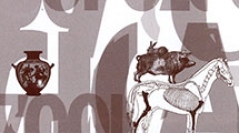

 Anthropozoologica
48 (1) - Pages 37-51
Anthropozoologica
48 (1) - Pages 37-51Although it is well known that modern Inuit in the resource-rich Foxe Basin region of Arctic Canada historically relied, and continue to rely, heavily on walrus, our knowledge of Thule Inuit walrus use in the area is limited. In this paper, new data is presented indicating walrus were being exploited intensively by Thule Inuit at NeHd-1 (Sanirajak), a winter site on the Foxe Basin coast of northeastern Melville Peninsula. Faunal remains from six large, discrete front-middens—each associated with a semisubterranean winter house—were examined. Of the specimens identified to species, walrus comprised nearly half of the aggregate sample; no archaeofaunal assemblage anywhere in the Canadian Arctic has produced so high a proportion. It is suggested that a pre-adaptation to organized, group hunting of both bowhead whales and walrus by Thule Inuit may have facilitated a year-round walrus-hunting industry centered on the acquisition and possible trade of reliably large amounts of meat, blubber, hides and ivory. An examination of walrus element frequencies at NeHd-1 indicated the need for a meat utility index (MUI) specific to walrus, and a modified meat utility index (MMUI) that takes into account the desirability of ivory.
Arctic, Nunavut, Foxe Basin, Thule and modern Inuit, hunter-gatherers, walrus, zooarchaeology.